 |
| “The Disrobing of Christ” |
El Greco is among the most recognizable and famous Spanish renaissance painters. Which is totally ironic because he was Greek: “El Greco” literally means “The Greek”. Doménikos Theotokópoulus being his real name, it’s no wonder the Spaniards of Toledo nicknamed him El Greco when he arrived in 1577, and we’re lucky the nickname stuck.
El Greco painted in a most unusual style that was considered weird at the time. His subjects, nearly all religious, seem thin and stretched, the primary subjects often accented with bright colors compared to their more drab canvas mates. But the expressions he puts on their faces are what catch your attention, which is likely exactly what El Greco wanted.
Our second day in Madrid was a Sunday; it would be our last weekend day in the Spanish interior and it was a beautiful day so we hopped on the 30 minute high speed train to Toledo for a day trip. While we weren’t particularly impressed with Toledo (gasp!) we did enjoy seeing some spectacular art, the El Grecos in particular.
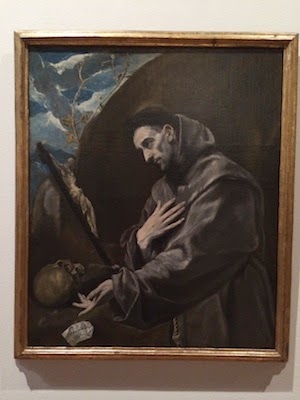 |
| “Saint Francis in Prayer” |
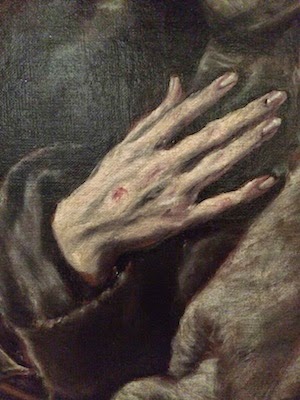 |
| “Saint Francis in Prayer” Closeup: Spindly Fingers and Stigmata of Saint Francis |
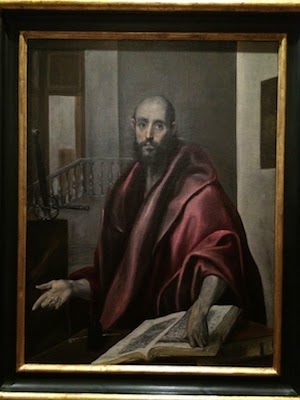 |
| “Saint Paul” |
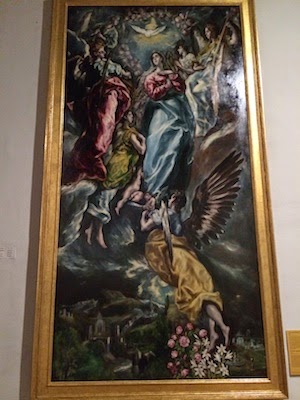 |
| “The Immaculate Conception” |
“The Immaculate Conception” offers a much grander scene: the moment when Mary consents to God’s request, conveyed by angels and conferred by the Holy Spirit (the dove). All of the figures are hilited in this piece, as if El Greco wanted us to know they are all equally important, but they retain his signature stretchiness and disproportionate view, exaggerated even further by the height of the canvas.
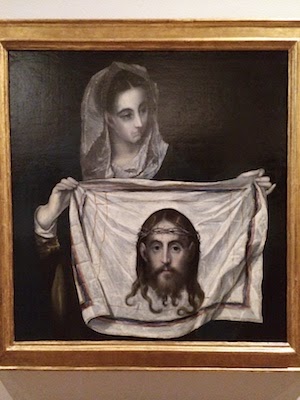 |
| “The Veil of Saint Veronica” |
While the El Grecos of the Museo De Santo Cruz are worth a visit, if someone visits Toledo in search of an El Greco, it’s likely “The Disrobing of Christ” (shown at the top of this blog) which is found in the sacristy of the cathedral of Toledo. El Greco was commissioned by the bishop to paint this painting specifically for the cathedral’s sacristy, the room where priests prepare for mass. It is quintessential El Greco: the scene is incredibly busy, but Christ stands out due to his brilliant red robe which is about to be stripped from him by the mob. Christ looks to heaven as if in peaceful, resigned prayer, while the executioner readies the cross at his feet. It was an unusual subject for El Greco to have picked: few artists, if any, had painted this moment from the Bible, and few could have done it as well as El Greco.
The El Grecos alone make Toledo worth going out of your way for, if nothing else.






